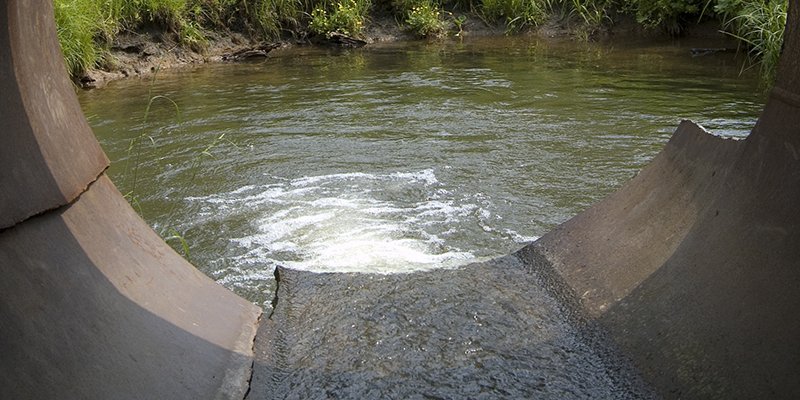-
We're on the #PFASFrontlines
The thousands of "forever chemicals" in the group known as PFAS are a daunting, complex challenge. But this isn't the first time we've tackled what seems like an insurmountable environmental crisis.
- We're developing long-term strategies that minimize PFAS liabilities.
- We're anticipating regulatory ramifications and crafting end-game solutions.
- We're adapting assessment and remediation technology advancements for the most decisive impact.
Where do your activities potentially intersect with PFAS?
AFFF Management
Many of our clients have used Aqueous Film Forming Foam (AFFF), and EnSafe fully recognizes that many are still required to continue using fluorinated firefighting foams. As the paradigm shifts, EnSafe is assisting our clients in identifying alternate foams, whether consistent with MILSPEC requirements or transitioning to fluorine-free foams (FFF) to minimize future liabilities. In partnership with EnSafe’s wholly owned subsidiary, GR2, we offer turn-key services, including front-end research, planning, and design through decommissioning/decontamination of suppression systems and apparatus, and management of AFFF wastes.
Assessment, Investigation & Cleanup
Where PFAS are identified and response actions are necessary, EnSafe’s support is comprehensive. We develop data quality objectives, sampling and analysis plans, and quality assurance plans to meet demands of constantly evolving policy. We execute highly efficient investigations, including treatment/disposal of investigation derived waste. Our chemists, field crews, and in-house forensics experts monitor changing analytical methods and data validation requirements, adapt protocols, and provide in-depth analysis to evaluate PFAS release histories. We design and implement both short- and long-term response actions, vetting sustainable solutions for complex treatment scenarios, engaging in community outreach, and partnering with public and regulatory stakeholders, to achieve project-specific objectives most appropriate given potential risks to human health and the environment.
Consumer Products
As federal policy continues to evolve, states are developing their own regulatory approaches. California’s Proposition 65, for example, affects manufacturers across the country. Because Minimum Safe Harbor Levels have not been determined at this time, any exposure to PFAS identified in California’s Prop 65 requires a Prop 65 warning. EnSafe identifies potential PFAS in our clients’ products and processes and develops sampling strategies (e.g., whole materials, wipe sampling) to document PFAS results.
Due Diligence
PFOA and PFOS have been designated hazardous substances under CERCLA. This, along with the potential for other PFAS to be designated, and differing state regulations, have significant liability repercussions for both the seller and prospective purchaser. EnSafe assists clients in identifying and planning for potential liabilities associated with PFOA and PFOS, as well as other emerging contaminant PFAS. We can assess current/historical PFAS use and the potential for impacts to environmental media. In addition to providing critical information to consider during property negotiations, such data is used to set environmental reserve values and project costs/timetables for potential regulatory enforcement actions. We apply both our proven Phase I ESA experience and PFAS expertise to provide accurate data for informed decision-making.
Permitting & Compliance
Pending regulations will change how PFAS-impacted wastes and wastewaters are managed — with resulting higher costs. We help clients navigate NPDES and Industrial Wastewater Discharge Permits, and associated changes to operations and treatment systems. We also support clients in PFAS usage tracking and reporting under both TSCA and TRI. EnSafe also helps clients identify and manage PFAS in products regulated by California Proposition 65, including strategies to sample and document PFAS content.
Pollution Prevention
Whether the impacts are to wastewater, storm water, or wastes, Pollution Prevention (P2) is one of our first lines of defense. P2 eliminates or reduces contaminants within facilities, rather than controlling pollution after it is generated. But because PFAS are difficult to identify within a facility, EnSafe’s approach includes a deep dive into processes; interface with suppliers to understand chemistry; verification through testing; and coordination with management and process engineering teams. We apply treatment technologies hand-in-hand with Pollution Prevention techniques — identifying PFAS sources and finding substitutions, minimizing PFAS-impacted wastes, and isolating waste-streams when PFAS are mission-critical — and works with management teams to develop management strategies for regarding elimination or isolation and treatment of impacted wastes streams.
Risk Assessment
EnSafe’s risk assessors are tracking the evolving research of PFAS fate and transport within biological systems and human and environmental toxicology. We keep abreast of evolving regulatory guidance/policy and work closely with federal and state agencies in developing risk assessment methodology to meet site-specific needs. Our approach balances on-the-ground lessons learned with recent developments, so we’re not caught in a “do loop” of continuous revisions as new information is published.
Wastewater & Storm Water
When PFAS are present in wastewater or storm water, very low discharge criteria or threats to adjacent ecological receptors may trigger treatment of effluent prior to discharge. Wastewater treatment plant design is a primary tool in EnSafe’s PFAS toolbox. We use treatment technologies hand-in-hand with Pollution Prevention techniques — identifying PFAS sources and finding substitutions, minimizing PFAS-impacted wastes, and isolating waste-streams when PFAS are mission-critical. And because PFAS may be co-located with other contaminants and complicate the remediation treatment train, our designs are long-term, holistic, and highly site specific, depending upon PFAS concentrations, co-contaminants, and underlying site geochemistry. We re-engineer site drainage to isolate PFAS-impacted systems and minimize treatment volumes, and design long-term, holistic remedies that optimize current and planned future infrastructure.
Litigation/Forensics Support
With PFAS-related lawsuits emerging nationwide, reliable forensic investigations of PFAS sources become critical in site investigations. Our multi-disciplinary PFAS experts have experience in PFAS source evaluation using multiple forensic techniques including chemical fingerprinting, signature chemicals, historical document review, and contaminant transport modeling. We’re already investigating sites nationwide and are up-to-date with emerging science advancements, using the state-of-the-art analyses, data mining, statistics, mapping and display necessary for your litigation support or source differentiation needs.








